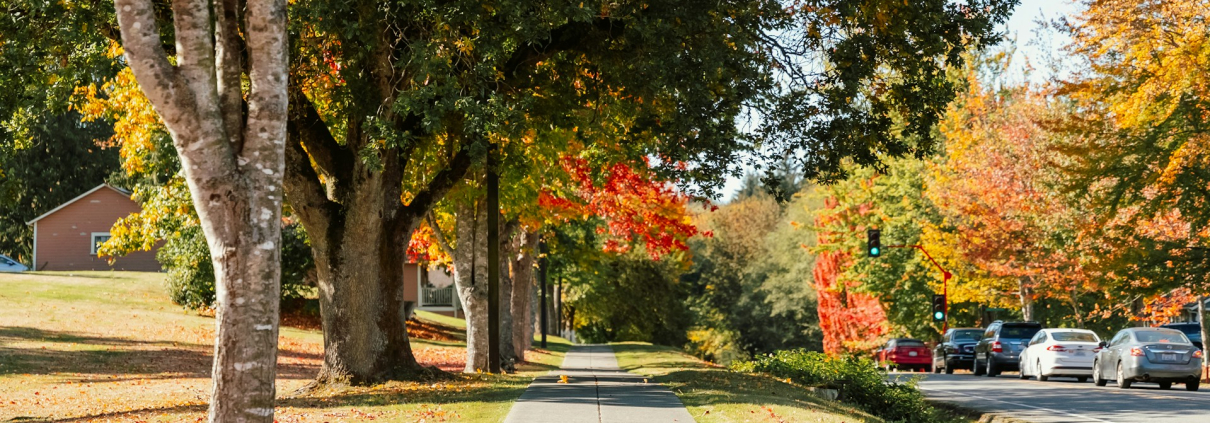How to Spot Dangerous Trees in Your Yard
Having trees in your yard brings beauty and shade, but they can also pose risks if they’re not healthy. Spotting dangerous trees early can prevent accidents and ensure a safe environment for your family and property. It’s important to check for signs like decay or structural weaknesses regularly.
Unhealthy trees may not always show obvious signs of trouble. That’s why knowing how to inspect your trees for hidden dangers is key. This involves looking for things like cracks in the trunk or signs of disease that weaken them over time.
By recognising the warning signs, you can take steps to keep your yard safe and your trees healthy. Whether it’s through simple at-home checks or understanding how the environment affects your trees, you’ll be better prepared to handle any issues that arise. With these insights, you can enjoy your outdoor space safely and confidently.
Identifying Signs of Tree Decay and Disease
Recognising signs of decay and disease in your trees is crucial for their health and safety. Trees with these issues can become weak, posing risks to your property and anyone nearby. Here’s how to spot trouble before it becomes dangerous:
– Fungal Growth: Fungi growing on trees, like mushrooms or conks, often indicate internal decay. These fungi munch away on the tree’s bark and can compromise the tree’s strength.
– Discoloured Leaves: Look for leaves that are yellow, brown, or show spots outside of normal seasonal changes. This can be a sign of disease affecting the tree’s health.
– Dead or Dying Branches: Branches without leaves or with brown leaves can signal a tree in distress. These branches can easily break and fall.
– Cracked Bark: Deep cracks or missing bark might mean the tree is losing its protective layer, making it vulnerable to pests and diseases.
– Sap Leaking: Excessive sap oozing from the trunk suggests the tree is trying to heal itself from damage or disease.
Act quickly if you find these signs. Removing diseased sections or getting expert help can prevent further damage and keep your yard safe.
Recognising Structural Weaknesses in Trees
Being aware of structural weaknesses in trees helps prevent accidents. Trees with poor structure might look fine outside but can easily snap or topple under stress. Here are key signs to recognise:
1. Leaning Trunks: A leaning tree can be a sign of root issues, making it prone to falling. Note if a tree starts leaning suddenly or the lean increases over time.
2. Weak Branch Unions: Look for V-shaped joints between branches and the trunk, as these are weaker than U-shaped unions. Weak joints are prone to splitting.
3. Heavy Canopy: A tree with too many branches on one side or an overly dense canopy can be unbalanced, making it more likely to break during storms.
4. Cracks and Splits: Deep, long cracks in the trunk or major branches point to stress points. These can lead to significant breakage with strong winds or rain.
5. Cavity Presence: Visible holes or cavities in the trunk are signs of decay or injury and weaken the tree’s structural integrity.
By regularly checking for these weaknesses, you can manage and mitigate risks. Reinforcing weak areas or removing problematic trees keeps your property safe and sound.
Assessing Environmental Factors Impacting Tree Safety
The environment around your trees plays a big role in their health and safety. By assessing these factors, you can pinpoint potential risks and take preventive action.
– Soil Condition: Check if the soil is too compacted or waterlogged. Trees need proper soil drainage to grow well. Poor soil conditions can lead to weak roots, making trees unstable.
– Weather Patterns: Consider the history of storms, heavy winds, or droughts in your area. Extreme weather can stress trees and make them more likely to break or topple.
– Proximity to Structures: Trees too close to buildings, fences, or power lines can become hazards. Overgrown branches might damage property or cause power outages.
– Animal Interference: Animals like rabbits and deer can damage bark or young branches. This harm can weaken trees over time, affecting their structural integrity.
– Nearby Construction: Construction work can disturb roots and compact soil around trees, leading to weakened stability.
By understanding and addressing these environmental factors, you protect both your trees and your property from potential risks.
Evaluating Tree Health with Simple At-Home Checks
Doing simple checks at home helps you keep an eye on your trees’ health. Regular evaluations can catch issues early, allowing you to act before they become problems.
1. Leaf Inspection: Look at the leaves for any changes in colour, size, or presence of spots, which might indicate disease or pest problems.
2. Bark Examination: Touch and visually inspect the bark for deep cracks, holes, or loose bark, suggesting decay or pest infestations.
3. Branch Flexibility: Gently bend some smaller branches. Flexible branches usually indicate good health, while brittle branches suggest a need for more attention.
4. Root Zone Observation: Note any unusual soil erosion or exposure of roots. These signs can indicate root stress or damage that may lead to instability.
5. Sound Test: Tap trunks with a stick. A hollow sound can signal decay inside the tree, which might not be visible outside.
Following these simple checks gives you a clear picture of your tree’s health. Timely maintenance can ensure your trees remain strong and safe fixtures in your yard.
Conclusion
Keeping an eye on the trees in your yard involves recognising signs of decay, structural weaknesses, and environmental pressures. Regular checks ensure your trees are healthy and your environment is safe. By taking the time to examine these factors, you play a vital role in preventing potential tree hazards. Safe trees not only enhance the beauty of your yard but also protect your home and loved ones.
If you notice any signs of danger or need expert advice, TPS Tree Services is here to help. Our team can provide the care and attention your trees need to thrive safely. Don’t wait until it’s too late—reach out to TPS Tree Services for professional inspections and tree clearing services. Your yard’s safety is our top priority, and we’re here to make sure your trees are safe and strong all year long.




